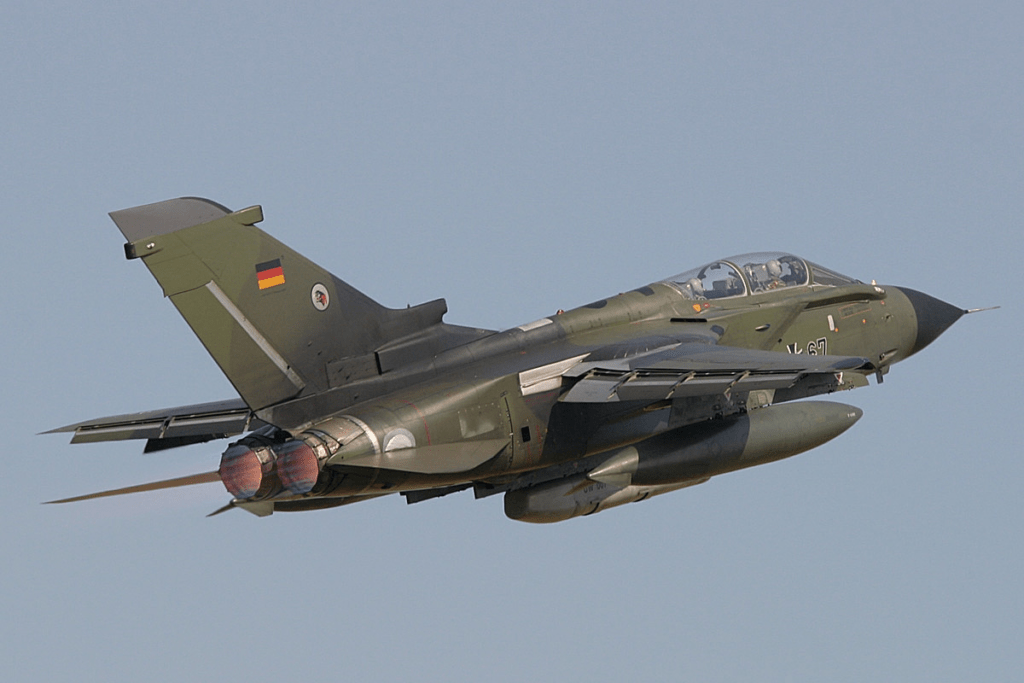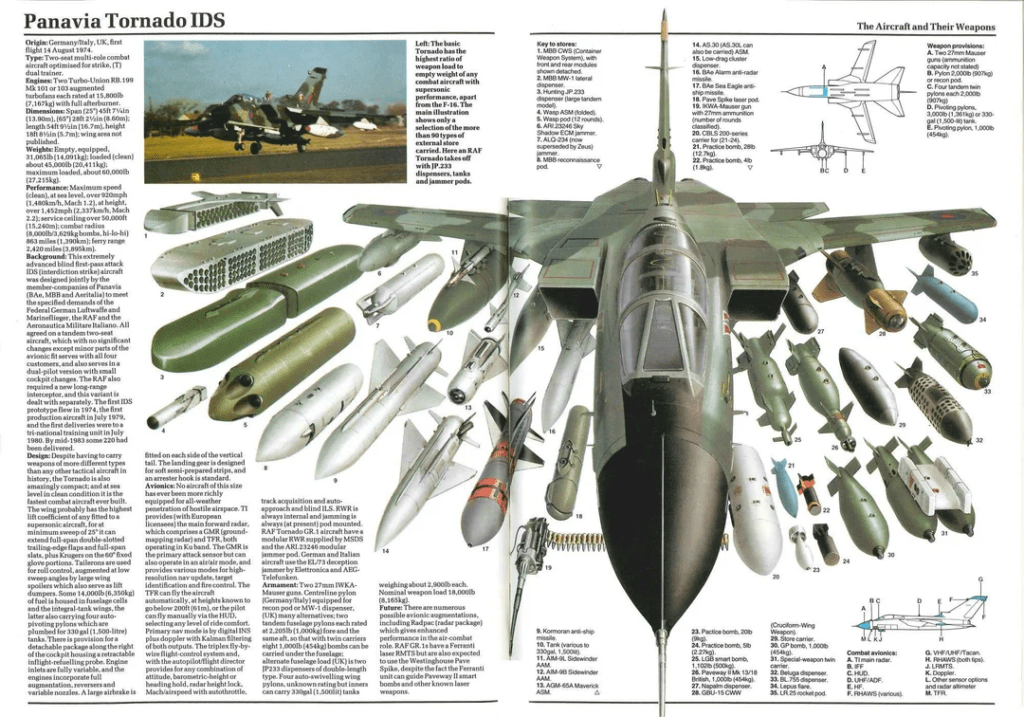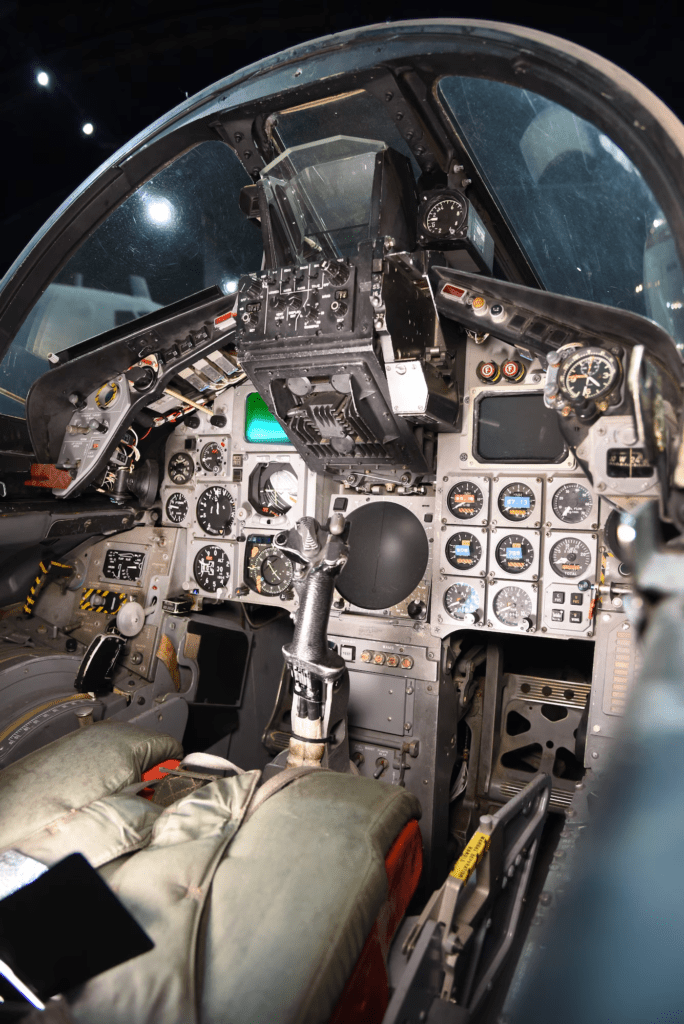The Tornado IDS: The Iconic Strike Aircraft of the Cold War and Beyond.
The Panavia Tornado IDS (Interdictor/Strike) stands as one of the most recognizable and effective multirole combat aircraft of the Cold War era. Designed to deliver precision strikes deep into enemy territory while evading advanced air defenses, the Tornado IDS was a cornerstone of NATO’s tactical strike capabilities. Operated by multiple nations, including the UK, Germany, Italy, and Saudi Arabia, this aircraft demonstrated versatility, survivability, and cutting-edge design for its time.

This blog explores the Tornado IDS’s history, design philosophy, performance specifications, and operational achievements. With your experience working on the Tornado IDS in Saudi Arabia, we’ll also examine its role in Gulf region defense and its successes and challenges during the Gulf Wars. Additionally, we’ll discuss its potential future inclusion in DCS World and the significance of its two-crew setup.
Development of the Tornado IDS
The Tornado IDS was born out of NATO’s vision for a collaborative strike platform to address a wide range of battlefield missions, from deep-penetration bombing to maritime strike operations. Panavia, a consortium of British Aerospace, MBB of Germany, and Alenia Aeronautica of Italy, led the program, producing an aircraft that was adaptable to the unique needs of its member nations.
Primary Role
Designed as a low-level, high-speed strike aircraft, the Tornado IDS was tasked with delivering precision-guided munitions while evading sophisticated enemy air defenses. This required advanced avionics, terrain-following radar, and exceptional speed.

Design Features of the Tornado IDS
The Tornado IDS was a marvel of engineering, integrating numerous innovations to meet its demanding mission profile.

Variable-Sweep Wings
- The Tornado’s variable-geometry wing design allowed it to operate effectively across a wide range of speeds. At low speeds, the wings extended to improve lift during takeoff and landing. At high speeds, they swept back to reduce drag, allowing the aircraft to achieve supersonic speeds.
Avionics and Systems
- Terrain-Following Radar: One of its standout features, this radar enabled the Tornado IDS to fly at extremely low altitudes, hugging the terrain to avoid radar detection.
- Navigation/Attack System: The Tornado was equipped with advanced computer systems to aid precision targeting, even in adverse weather or at night.
- Weapons Loadout: It carried a diverse arsenal, including laser-guided bombs, anti-ship missiles, and cluster munitions. The Tornado IDS was also equipped with JP233 and MW-1 munitions dispensers for runway denial missions.

Two-Crew Configuration

- The Tornado’s pilot and navigator/weapons systems officer (WSO) worked in tandem, reducing workload and enhancing mission success. The WSO handled navigation, radar, and weapon delivery, freeing the pilot to focus on flying the aircraft.
Performance Specifications
- Maximum Speed: Mach 1.3 at low altitude, Mach 2.2 at high altitude.
- Combat Radius: Approximately 1,400 km with a standard payload.
- Service Ceiling: 50,000 feet.
- Engines: Powered by two Turbo-Union RB199-34R Mk 103 turbofans, delivering over 16,000 pounds of thrust each.
- Joystick / HOTAS – AMAZON.com
- Rudder Pedals – AMAZON.com
- Throttle Quadrant – AMAZON.com
- Gaming Chair – AMAZON.com
- VR Headset – AMAZON.com
Operational History and Effectiveness
The Tornado IDS entered service in the late 1970s and became the backbone of NATO’s tactical air forces. It was operated by the United Kingdom, Germany, Italy, and Saudi Arabia, each tailoring the aircraft to their specific operational needs.
Nations that Operated the Tornado IDS
- United Kingdom: Known as the GR1/GR4 in RAF service, it was central to British air power during the Gulf War and subsequent conflicts.
- Germany: The Luftwaffe primarily employed it for low-level strikes and reconnaissance roles.
- Italy: Focused on both maritime and strike missions.
- Saudi Arabia: The RSAF utilized it for regional defense, particularly during the Gulf War, where it played a crucial role in coalition air operations.

Successes in the Gulf Wars
The Tornado IDS proved its worth during the Gulf War (1990–1991), performing high-risk, low-level strike missions against heavily defended Iraqi targets.
- Runway Denial: One of its most notable roles was using JP233 munitions to cripple Iraqi airfields, preventing enemy aircraft from taking off.
- Precision Strikes: It was among the first platforms to deploy laser-guided bombs in combat, demonstrating NATO’s shift towards precision warfare.
Challenges and Losses
While highly capable, the Tornado IDS faced significant risks during low-level missions. Early losses in the Gulf War highlighted its vulnerability to modern air defenses, particularly SAMs and AAA fire. This prompted a shift to medium-altitude tactics, where it excelled with precision-guided munitions.

The Tornado IDS in Saudi Arabia
Saudi Arabia’s fleet was instrumental in maintaining security and stability in the Gulf, especially during the Gulf War and subsequent conflicts. The Tornado IDS and ADV were very reliable as well as easy to work on from a personal perspective. I had 13 years working on the Khamis Mushayt ADV and to a lesser extent the ADV.
The build quality of the Tornado compared to US aircraft like the F-111 and F-18 in my experience was superior and many ways. Just the feel and design had a” I’m meant to last ” feel written all over it. Beautifully crafted and struck me as overengineered in a good way for sure. Easy to work on, load and reconfigure generally.
That’s not to say USA aircraft were poor. Definitely not! The whole design mentality was visibly different I thought. All great to work on. I can’t say the same for the Mirage III O as it was a nightmare. If you ever owned a Renault I think you will have the idea of what I’m getting at.
- Adaptations for Desert Operations: Saudi Tornado’s were modified to operate in extreme desert conditions, ensuring reliability and effectiveness in the harsh environment.
- Regional Defense: The RSAF leveraged the Tornado IDS for both strike missions and deterrence, securing critical infrastructure and countering regional threats.
Strengths and Weaknesses of the Tornado IDS

Strengths
- Multirole Capability: The Tornado IDS excelled in a variety of missions, from deep strikes to reconnaissance and anti-ship operations.
- Low-Level Penetration: Its terrain-following radar and variable-sweep wings made it highly effective in avoiding radar detection.
- Two-Crew Setup: The division of responsibilities between pilot and WSO enhanced situational awareness and mission effectiveness.
Weaknesses
- Survivability at Low Altitudes: Its reliance on low-level attack profiles made it vulnerable to modern air defenses.
- Aging Systems: By the 2000s, the Tornado IDS faced challenges from more modern multirole aircraft, such as the Eurofighter Typhoon and F-15E Strike Eagle.
Tornado IDS FLight Manual

The Tornado IDS flight manual is available if you CLICK HERE for a direct download from this page. It is not a redirect or click on the Manual Picture adjacent for all your technical Information. THis will be a real load of information at over 600 pages. Enjoy!
Legacy and Potential in DCS World
The Tornado IDS remains a beloved aircraft among aviation enthusiasts, celebrated for its unique design and operational versatility.
Potential as a DCS Module
A Tornado IDS module in DCS World would be a game-changer for virtual pilots. Its variable-geometry wings, terrain-following radar, and two-crew dynamic would offer a deeply immersive experience. Missions could range from low-level strikes against heavily defended targets to high-speed interdictions, replicating the intense scenarios faced by Tornado crews.
The Tornado IDS’s rich operational history, combined with its unique handling characteristics, makes it one of the most anticipated additions to DCS World. Its inclusion would allow players to experience the challenges and excitement of flying one of NATO’s most iconic strike aircraft.
- Latest CPU’s Available Now – Amazon.com
- Get a NEW GPU Best Performance – AMAZON.com
- Upgrade RAM Here today – AMAZON.com
- Prebuilt PC Options – AMAZON.com
Conclusion
The Tornado IDS was a masterpiece of Cold War engineering, designed to excel in the most demanding combat scenarios. From its pioneering terrain-following radar to its versatile weapons loadout, it was an aircraft ahead of its time.

With a storied operational history, including your firsthand experience in Saudi Arabia, the Tornado IDS stands as a testament to the ingenuity and collaboration of its designers. As a potential addition to DCS World, it would provide flight simulation enthusiasts with a chance to experience the thrill and challenge of operating this legendary strike aircraft.
Author
Brendon McAliece (Aka Gunnie) is a military veteran with 23 years working on Jet Fighters, their weapons systems and ejection seat/module systems as well as munitions and R&D. Involved with flight simulation since the 1980s, he has flown all the major flight simulators over the years.
He is an Australian expat who has lived in Malaysia, UK, Saudi Arabia and more recently Thailand. He is a multi-lingual blogger who loves to share his life experiences here on LetsFlyVFR.com and DreamingGuitar.com, with his lifestyle and Travel experiences Blog plus his Dreaming Coffee website.
Learn More @ DreamingGuitar.com – DreamingCoffee.com – LetsFlyVFR.com
( HOME – BLOG – SHOP – ABOUT )
As an Amazon affiliate I may benefit from qualifying sales.









